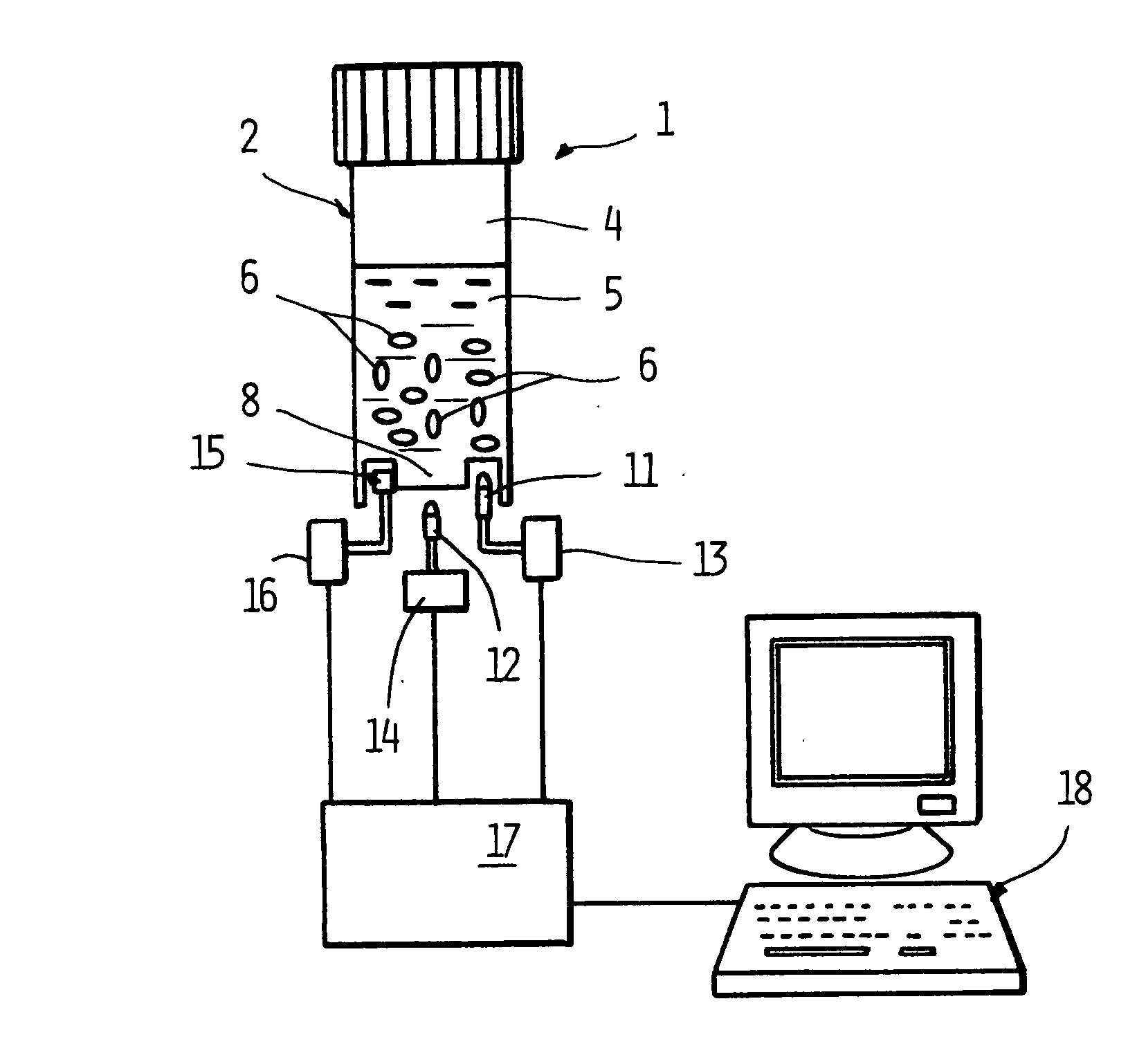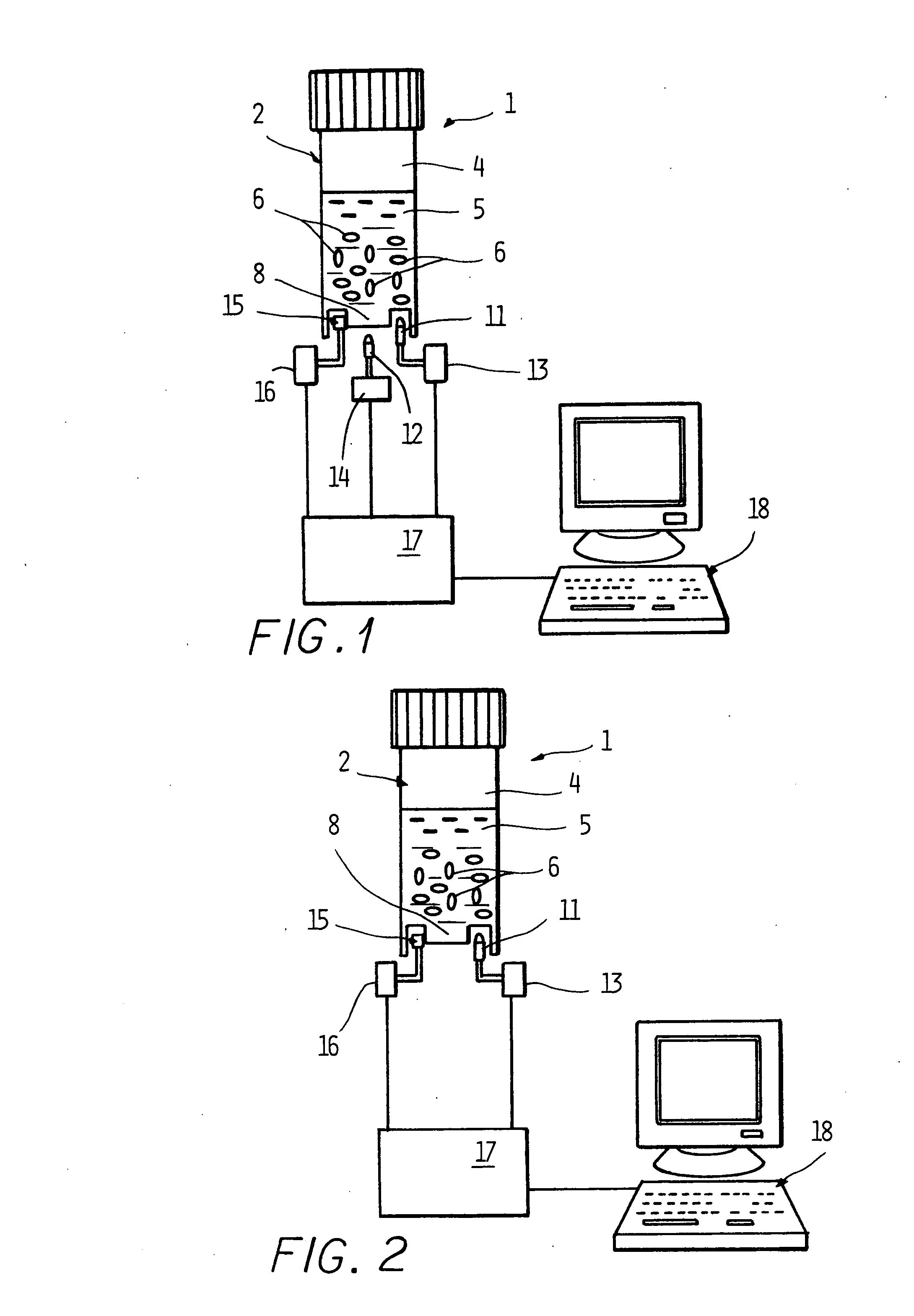Device and Method for the Detection and Enumeration of Multiple Groups of Microorganisms
a technology of microorganisms and devices, applied in the field of devices and methods for the detection and enumeration of multiple groups of microorganisms, can solve the problems of requiring a long time for detection, laborious, and detrimental to the health of the organism, and the inability to combine both assays in one tub
- Summary
- Abstract
- Description
- Claims
- Application Information
AI Technical Summary
Problems solved by technology
Method used
Image
Examples
example
[0034]A medium containing: tryptophan 1.5 g / l; ammonium sulfate 2.5 g / l; sodium lauryl sulfate 0.3 g / l; Sodium desoxycholate 0.05 g / l; bile salts 0.4 g / l; sodium chloride 2.5 g / l; magnesium sulfate 0.1 g / l; O-nitrophenyl-β-D-galactopyranoside (ONPG) 0.1 g / l; isopropyl-β-D-thiogalactopyranoside (IPTG) 0.1 g / l; 4-methylumbelliferyl-β-D-glucoronidase (MUG) 0.1 g / l was used for the simultaneous detection of coliform and E. coli.
[0035]100 ml of test water was combined with the dehydrated medium to obtain the final concentrations listed above and inserted into a container with a window, as described above. The color and fluorescence were monitored automatically every 10 minutes. A flat curve was obtained in water that did not contain either coliform or E. coli. FIG. 3 shows the curve obtained with water inoculated with E. coli. The color signal starts going down in a rapid rate due to the creation of the yellow color after around 6 hours. The fluorescent signal starts a sharp upward tren...
PUM
| Property | Measurement | Unit |
|---|---|---|
| wavelength | aaaaa | aaaaa |
| transparent | aaaaa | aaaaa |
| visible spectrum | aaaaa | aaaaa |
Abstract
Description
Claims
Application Information
 Login to View More
Login to View More - R&D
- Intellectual Property
- Life Sciences
- Materials
- Tech Scout
- Unparalleled Data Quality
- Higher Quality Content
- 60% Fewer Hallucinations
Browse by: Latest US Patents, China's latest patents, Technical Efficacy Thesaurus, Application Domain, Technology Topic, Popular Technical Reports.
© 2025 PatSnap. All rights reserved.Legal|Privacy policy|Modern Slavery Act Transparency Statement|Sitemap|About US| Contact US: help@patsnap.com



